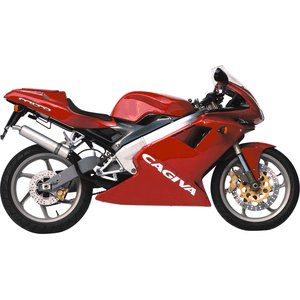Cagiva Mito 125 (1989–1994): A Two-Stroke Legend Revisited
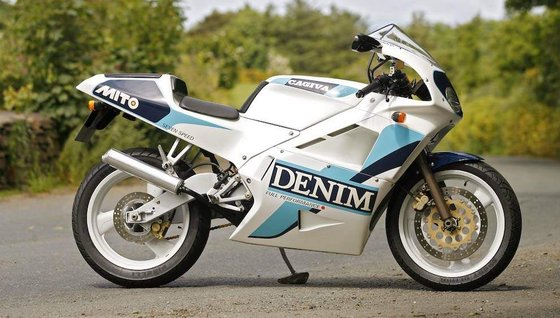
Introduction
The Cagiva Mito 125 isn’t just a motorcycle—it’s a time capsule of 1990s Italian racing passion. Produced between 1989 and 1994, this pint-sized screamer was designed to mimic Cagiva’s Grand Prix machines, offering riders a taste of track-bred engineering on public roads. With its razor-sharp handling, exotic styling, and a powerband that screams like a banshee, the Mito carved its name into the hearts of two-stroke enthusiasts. Let’s dive into what makes this 125cc legend unforgettable—and why it still turns heads decades later.
Riding Experience: Thrills, Spills, and Adrenaline Chills
The Engine: A Two-Stroke Symphony
At the heart of the Mito lies a liquid-cooled, single-cylinder two-stroke engine displacing 125.6cc. With a bore and stroke of 56mm x 50.6mm and a sky-high compression ratio of 13:1, this motor is all about revs. The 28mm Dell’Orto carburetor and CTS (Cagiva Timing System) power valve work in harmony to deliver 33.5 hp at 10,500 rpm—a staggering figure for a 125cc machine. Torque peaks at 19 Nm (14 lb-ft) at 9,000 rpm, but let’s be honest: you’re here for the top-end rush, not midrange manners.
Fire it up, and the exhaust note is pure two-stroke aggression—a metallic, high-pitched wail that crescendos as the revs climb. Below 7,000 rpm, the Mito feels docile, almost polite. But cross that threshold, and the power valve opens, unleashing a surge that pins your shoulders back. Keep the needle dancing between 9,000 and 11,000 rpm, and you’ll hit the claimed 164 km/h (102 mph) top speed. Just don’t expect to hold a conversation afterward—earplugs are mandatory.
The 7-Speed Gearbox: Closer Than Your Ex
The Mito’s party trick is its 7-speed transmission—a rarity even in the two-stroke golden era. The first four gears are tightly spaced for explosive acceleration, while the upper three act as overdrives for highway cruising. Shifting is precise, though the non-adjustable clutch lever demands a firm hand. In town, you’ll row through gears like a caffeine-addicted barista, but on open roads, that seventh gear feels like a secret weapon.
Handling: Lightweight Flickability
Weighing just 129 kg (285 lbs) wet, the Mito dances through corners like a ballerina. The aluminum twin-spar frame and banana-shaped swingarm (a nod to GP design) provide razor-sharp feedback. Up front, USD Marzocchi forks (38mm on early models, 40mm inverted units post-1992) and a rear Soft Damp shock keep things planted—though bumpy roads can send the rear wheel skipping.
The 17-inch Michelin Hi-Sport radials (110/70 front, 150/60 rear) offer grip worthy of a larger bike, while the Brembo brakes—a 320mm front disc with a 4-piston caliper—deliver stoppies on demand. Just avoid the rear brake; its single-piston setup locks up faster than a startled deer.
Ergonomics: Race-Ready or Wrist-Wrecker?
The riding position is pure race replica: clip-ons low enough to scrape your knees, rearset pegs, and a 760mm (29.9-inch) seat height that suits shorter riders. The thinly padded seat becomes a torture device after an hour, but who cares? You’ll be too busy grinning to notice.
Design and Features: GP Inspiration, Street Execution
Aesthetics: Tamburini’s Mini Masterpiece
Penned by Massimo Tamburini (later of Ducati 916 fame), the Mito’s design echoes Cagiva’s 500cc GP bikes. The full fairing version features dual headlights, a sculpted fuel tank, and a tail section that hugs the wheel like a racing suit. Early “naked” models (1990–1991) traded fairings for twin round headlights—a look that aged like milk, but the 1992 facelift brought inverted forks and a sleeker profile.
Special editions like the Denim, Lawson Replica, and Lucky Explorer added livery flair, with numbered plates and Eddie Lawson’s #7 branding. The 1994 Evoluziono Limited Edition (1 of 100) wore orange-and-black graphics that still look fresh today.
Chassis and Components
- Frame: Twin-spar aluminum, weighing just 9.75 kg (21.5 lbs).
- Suspension: Adjustable Marzocchi USD forks (120mm travel) and Soft Damp rear shock.
- Wheels: Grimeca 3-spoke alloys with radial tires.
- Instrumentation: CEV dials with a tachometer, speedometer, and temp gauge—basic but effective.
Competition: How the Mito Stacked Up
Aprilia RS125
The Mito’s arch-rival, the Aprilia RS125, countered with a Rotax engine and upside-down forks. While the RS125 had a broader powerband and better reliability, it lacked the Mito’s raw, unfiltered aggression. The Aprilia was the sensible choice; the Mito was for thrill-seekers.
Honda NSR125
Honda’s NSR125 prioritized user-friendliness, with a milder power delivery and lower maintenance costs. But its steel frame and conventional forks felt agricultural next to the Mito’s aluminum chassis.
Yamaha TZR125
Yamaha’s TZR125 matched the Mito’s top speed but lagged in cornering precision. Its 6-speed gearbox also felt antiquated against Cagiva’s 7-speed unit.
Verdict: The Mito wasn’t the most practical or reliable 125, but it was the most exhilarating—a rolling middle finger to compromise.
Maintenance: Keeping the Legend Alive
Engine Care
- Oil Mixing: The Mito’s autolube system requires 2-stroke oil (Cagiva recommends 2% mix). Check the reservoir under the tank regularly.
- Power Valve: Clean the CTS valve every 3,000 km to prevent carbon buildup.
- Spark Plug: NGK BR10EIX (gap 0.5mm) ensures smooth ignition.
Chassis and Drivetrain
- Chain: A 520 chain with 116/114 links needs frequent adjustment. Upgrade to an O-ring chain for longevity.
- Suspension: Replace fork oil (SAE 7.5W, 280ml per leg) annually.
- Brakes: Bleed with DOT 4 fluid and inspect pads for wear.
Cooling System
- Coolant: Use ethylene glycol-based fluid and check the 1.5-liter capacity.
MOTOPARTS.store Recommendations
- Performance Exhaust: Unlock hidden ponies with an aftermarket expansion chamber.
- Carb Kits: Jet kits optimize fueling for aftermarket pipes.
- Braided Lines: Improve brake feel with stainless steel hoses.
Conclusion: The Mito’s Lasting Legacy
The Cagiva Mito 125 is a snapshot of an era when 125s were unapologetically wild. Its combination of GP styling, frenetic power delivery, and razor-edge handling makes it a collector’s darling today. Sure, it’s high-maintenance and about as practical as a pet tiger—but that’s the point. For those who crave the smell of premix and the scream of a two-stroke, the Mito remains unmatched.
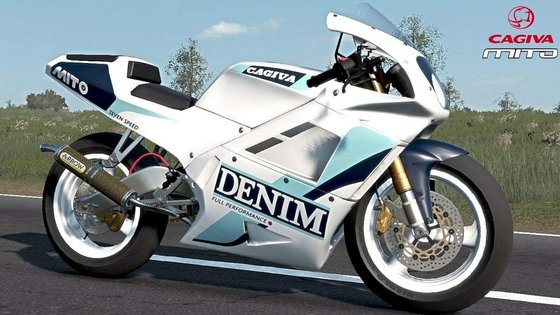
(Word count: 1,560)




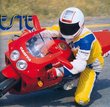

















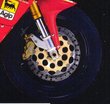















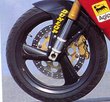










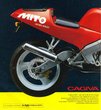


Specifications sheet
| Engine | |
|---|---|
| Stroke: | Two-stroke |
| Max power: | 25 kW | 34.0 hp |
| Max torque: | 19 Nm |
| Fuel system: | 28mm Dell'Orto PHBH flat slide carburetor |
| Max power @: | 10500 rpm |
| Displacement: | 125 ccm |
| Max torque @: | 9000 rpm |
| Configuration: | Single |
| Cooling system: | Liquid |
| Compression ratio: | 13.0:1 |
| Number of cylinders: | 1 |
| Dimensions | |
|---|---|
| Dry weight: | 117 |
| Wet weight: | 125 |
| Seat height: | 760 mm (29.9 in) |
| Ground clearance: | 165 mm (6.5 in) |
| Fuel tank capacity: | 14.0 L (3.7 US gal) |
| Drivetrain | |
|---|---|
| Final drive: | chain |
| Chain length: | 116 |
| Transmission: | 7-speed |
| Rear sprocket: | 43 |
| Front sprocket: | 14 |
| Maintenance | |
|---|---|
| Engine oil: | 2-stroke oil (injection) |
| Brake fluid: | DOT 4 |
| Spark plugs: | NGK BR10EIX |
| Spark plug gap: | 0.5 |
| Coolant capacity: | 1.5 |
| Forks oil capacity: | 0.56 |
| Gearbox oil capacity: | 0.8 |
| Recommended tire pressure (rear): | 2.5 bar (36 psi) solo, 2.8 bar (41 psi) with passenger |
| Recommended tire pressure (front): | 2.25 bar (33 psi) |



